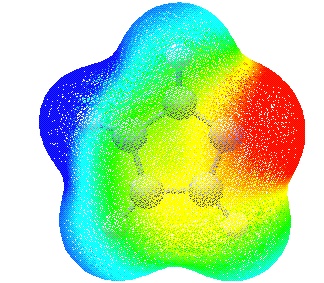#P Becke3LYP/6-31G(d) cube=(medium,density) scf=tight Becke3LYP/6-31G(d) imidazole density 0 1 C,0,-0.9741771331,0.,-0.6301926171 C,0,-0.907244165,0.,0.7404218415 N,0,0.4034833469,0.,1.1675913068 C,0,1.124080815,0.,0.0676366081 N,0,0.3402990549,0.,-1.0525852362 H,0,0.6597356899,0.,-2.0102490569 H,0,-1.8002953135,0.,-1.3251503429 H,0,-1.7267332321,0.,1.4464261172 H,0,2.2048589411,0.,0.0167357941 imi_den.cub

